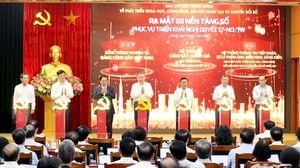On the 88th anniversary of Amelia Earhart's mysterious disappearance, a new chapter in the quest to solve one of aviation's greatest enigmas is set to unfold. The Purdue Research Foundation (PRF) and the Archaeological Legacy Institute (ALI) announced a joint expedition to locate the famed aviator's lost Lockheed Electra 10E aircraft. The search, dubbed the Taraia Object Expedition, will focus on a visual anomaly spotted in satellite imagery within the lagoon of Nikumaroro Island, a remote speck in the Pacific Ocean roughly halfway between Australia and Hawaii.
Amelia Earhart vanished on July 2, 1937, while attempting to become the first female pilot to circumnavigate the globe. Alongside her navigator Fred Noonan, she was last heard from over the central Pacific, and her disappearance has since sparked nearly a century of speculation, investigation, and myth. The new expedition offers perhaps the greatest opportunity yet to finally close the case.
Richard Pettigrew, executive director of ALI, described the effort as "maybe the greatest opportunity ever to finally close the case." He emphasized the strength of the accumulated evidence, saying, "With such a great amount of very strong evidence, we feel we have no choice but to move forward and hopefully return with proof. I look forward to collaborating with Purdue Research Foundation in writing the final chapter in Amelia Earhart’s remarkable life story.”
The expedition will launch in November 2025, with a field team organized by ALI sailing from Majuro in the Marshall Islands to Nikumaroro. The team plans to spend five days on the island inspecting the so-called Taraia Object, which was first located in 2020 and has remained in the same spot in the lagoon since 1938. If the object is confirmed to be the remains of Earhart’s plane, larger excavation efforts are slated for 2026 to recover what is left of the aircraft.
Nikumaroro, formerly known as Gardner Island, has long been central to one of the most compelling theories about Earhart’s fate: the Nikumaroro hypothesis. This posits that Earhart and Noonan did not crash into the sea but instead made an emergency landing on the uninhabited island, where they eventually perished. Over nearly 40 years, The International Group for Historic Aircraft Recovery (TIGHAR) has amassed a trove of circumstantial evidence supporting this theory.
Among the evidence are radio bearings recorded by the U.S. Navy, Coast Guard, and Pan American World Airways that converge on Nikumaroro, suggesting Earhart’s last transmissions originated near the island. A 2017 forensic analysis of human bones found on Nikumaroro in 1940 revealed bone lengths closely matching Earhart’s, more similar than 99% of individuals tested, bolstering the claim that the remains could be hers. Artifacts discovered on the island—including a woman’s shoe, a compact case, a freckle cream jar, and a medicine vial—all date back to the 1930s, aligning with the era of Earhart’s flight.
Another intriguing piece of evidence is the Bevington Object, a photographic anomaly captured just three months after Earhart’s disappearance, which appears to show one of the Electra’s landing gear on the reef near Nikumaroro. The Taraia Object itself, the focus of the upcoming expedition, was first spotted in satellite images and is believed to be consistent in size and composition with the Electra. Pettigrew notes that the location fits perfectly with Earhart’s planned flight path and the approximate origin of her last radio calls.
Despite the promising evidence, not everyone is convinced. Ric Gillespie, executive director of TIGHAR and leader of The Earhart Project, expressed skepticism about the Taraia Object’s significance. Gillespie, who has led a dozen expeditions over 35 years and recovered other artifacts supporting the Nikumaroro hypothesis, believes the object in the satellite images is likely a coconut palm tree with a root ball washed ashore by a storm. “We’ve looked there in that spot, and there’s nothing there,” he said. Gillespie contends the Electra would be buried in coral rubble rather than sand, making it less visible in satellite photos.
Earhart’s connection to Purdue University runs deep. She joined the university as a visiting professor in 1935, serving as a career counselor for women and advising the aeronautical engineering department. Purdue President Mung Chiang highlighted this legacy, noting, “About nine decades ago, Amelia Earhart was recruited to Purdue, and the university president later worked with her to prepare an aircraft for her historic flight around the world. Today, as a team of experts try again to locate the plane, the Boilermaker spirit of exploration lives on.”
Purdue Research Foundation played a pivotal role in Earhart’s 1937 flight by funding the Lockheed Electra through the Amelia Earhart Fund for Aeronautical Research. Donations from notable individuals and companies, including trustee David Ross, J.K. Lilly, Vincent Bendix, and Western Electric, Goodrich, and Goodyear, helped finance the “flying laboratory” outfitted for long-distance flights.
Earhart and her husband and manager, George Putnam, had expressed their intention to return the Electra to Purdue after her historic journey. Steven Schultz, senior vice president and general counsel of Purdue University, affirmed this commitment: “Based on the evidence, we agree with ALI that this expedition offers the best chance not only to solve perhaps the greatest mystery of the 20th century, but also to fulfill Amelia’s wishes and bring the Electra home.”
To honor her legacy, Purdue continues to celebrate Earhart across campus with facilities, programs, and clubs bearing her name. In 2024, construction began on the approximately 10,000-square-foot Amelia Earhart Terminal at Purdue University Airport, which recently resumed commercial passenger services at the nation’s first university airport.
The upcoming expedition will embark from Majuro on November 5, 2025, with the team spending five days on Nikumaroro inspecting the Taraia Object before returning to port on November 21. ALI plans to share updates through its Heritage Broadcasting Service, a subscription video platform, keeping enthusiasts and researchers informed as the search progresses.
Should the initial expedition confirm the identity of the aircraft, PRF and ALI intend to return in 2026 with a larger team to excavate and recover the plane’s remains. This effort not only aims to solve a nearly century-old mystery but also to honor Amelia Earhart’s pioneering spirit and her enduring connection to Purdue University.
As the world watches, this expedition holds the promise of finally bringing closure to one of history’s most enduring aviation mysteries and perhaps returning a cherished piece of history to where it belongs.





